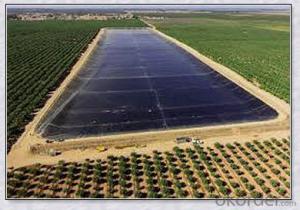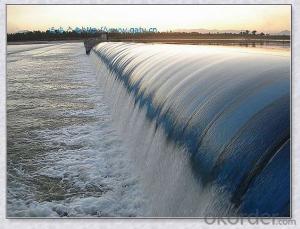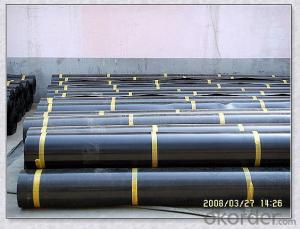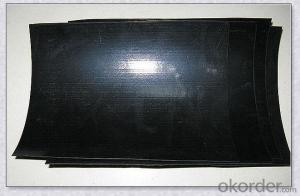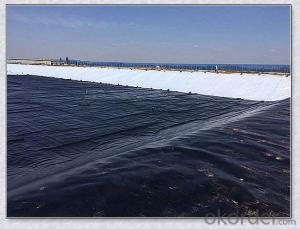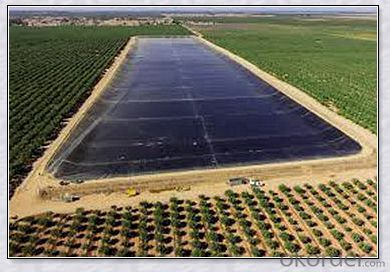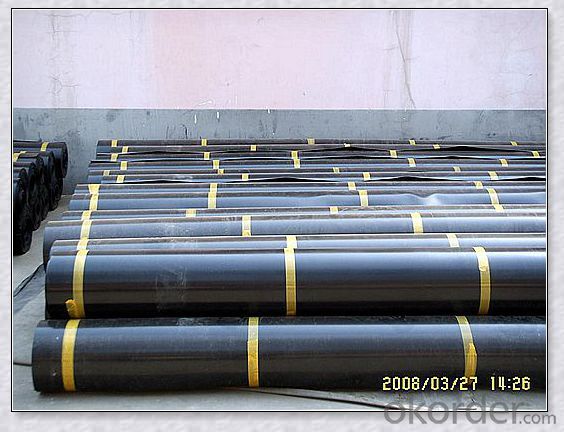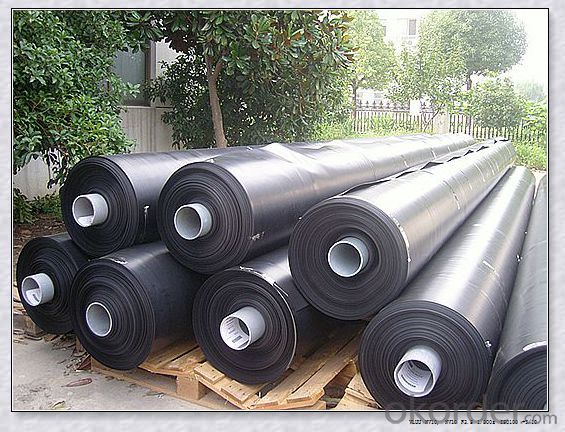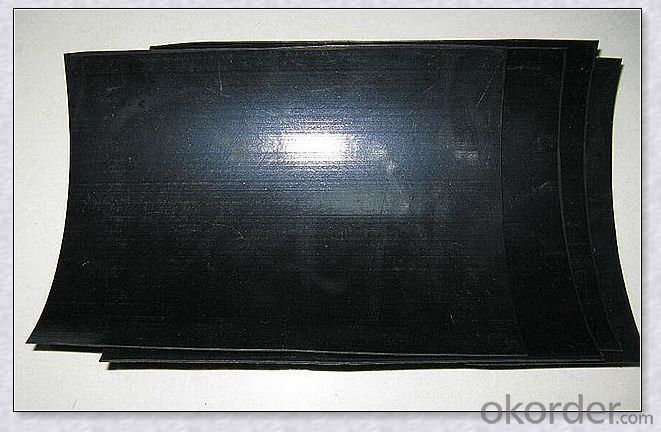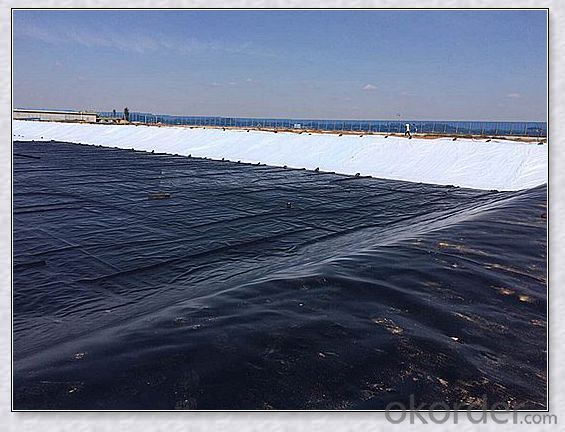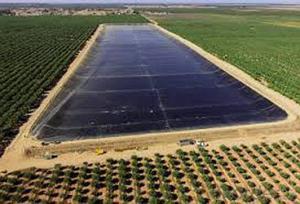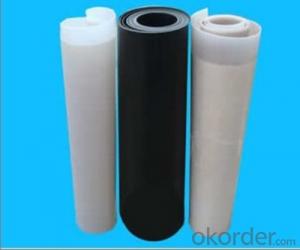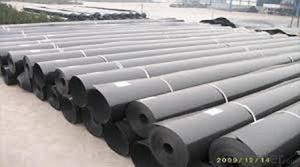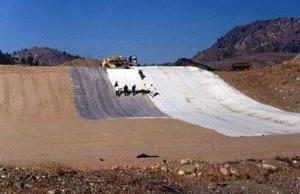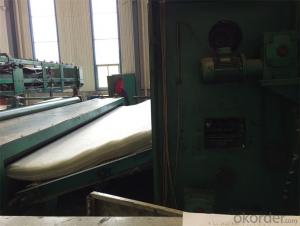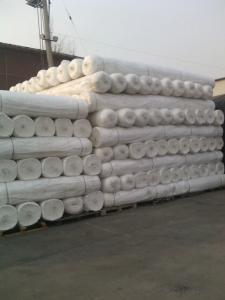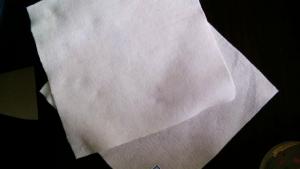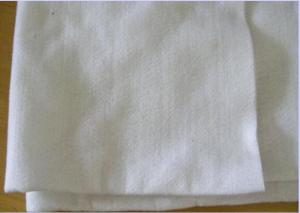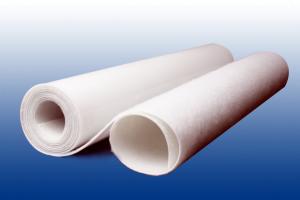High-Density Smooth Chloride Geomembrane with Non Woven Geotextile Underlayment Fabric
- Loading Port:
- China main port
- Payment Terms:
- TT OR LC
- Min Order Qty:
- 1000 m²
- Supply Capability:
- 1000000 m²/month
OKorder Service Pledge
OKorder Financial Service
You Might Also Like
Specification
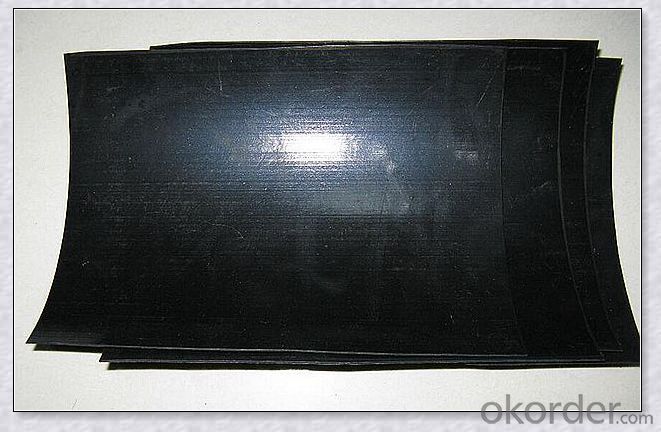
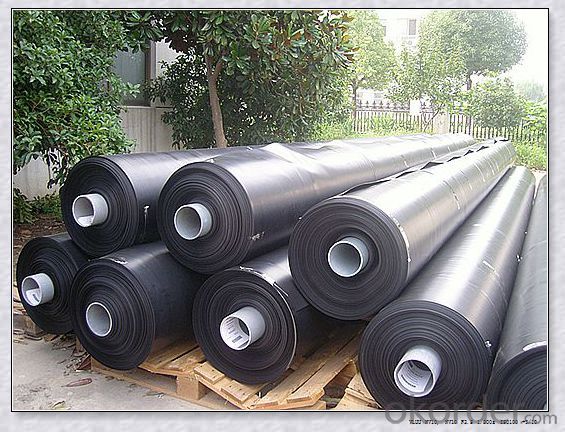
geomembrane hdpe
Geo-membrane is produced by a method of three layer co-extrusion model. The raw material is processed at 200°C by fusing and coextrusion, whose basic properties are kept during the producing process.
Description
(middle) density polyethylene geomembrane is made from HDPE resin
And additives such as antioxidant, light-stabilize and carbon black, etc. It is extensively used for landfills, sewages, mining, environmental protections and irrigation projects.
Packaging & Shipping
Packing: PLASTIC FILM INSIDE, AND WOVEN BAG OUTSIDE
Shipping: About 15 days after receipt the deposit
geotextile fabric
permeability,filtration,easy for construction
ISO and CE certificate
Good quality and competitive price
Our Service
Quality assurance
1.On a regular basis or as per your request,we entrust national testing agencies to conduct quality inspections
2. Strictly in accordance with the ISO9001-2008 international quality system standard,we monitor and manage the whole process throughout production,quality testing,and measurement to ensure product quality
3. For quality-related construction delay or substandard construction(except for damage or losses due to customer’s responsibility or irresistible natural disasters),we have refunding,replacement,and repair services.We will respond to customers’ feedbacks on quality issues within 24 hours.
FAQ:
Q: What kind of payments does jenor support?
A: T/T, L/C, Cash are accepted.
Q: Do you charge for the samples?
A: Accordeing to our company policy, the samples are free, we only charge the freight fee. And we will return the freight fee during the next order.
Q: Can you produce according to customers' design?
A: Sure, we are professional manufacturer, OEM and ODM are both welcome.
Q: Do you have other products?
A: Yes, please check the pictures:
- Q: How do geotextiles help with reinforcement of embankments?
- Geotextiles help with reinforcement of embankments by providing stability and preventing erosion. They act as a barrier against soil movement, distributing the load and reducing the potential for settlement. Geotextiles also allow for water drainage, preventing water buildup and maintaining the embankment's structural integrity.
- Q: Pvc waterproof board and geotextile must be used with what
- To stick together, I specialize in producing pvc waterproof board and geotextile and other geotextile materials
- Q: What are the different geotextile manufacturing processes?
- There are several different geotextile manufacturing processes, including needle punching, thermal bonding, spunbonding, and weaving. Each process has its own advantages and is used depending on the desired properties and applications of the geotextile. Needle punching involves mechanically interlocking fibers, thermal bonding uses heat to bond fibers together, spunbonding creates a nonwoven fabric through extrusion and stretching, and weaving involves interlacing yarns to create a fabric. These processes allow for the production of geotextiles with various strengths, permeabilities, and filtration capabilities, making them suitable for a wide range of civil engineering and environmental applications.
- Q: How do geotextiles help with filtration?
- Geotextiles help with filtration by preventing the passage of fine soil particles while allowing water to pass through. They act as a barrier, trapping sediments and contaminants, thus improving water quality and preventing soil erosion.
- Q: Geotextile and non-woven fabrics What is the difference
- Geotextile is divided into two non-woven geotextile and woven geotextile, non-woven geotextile and acupuncture and spunlace, staple fiber and long fiber. Nonwovens means that the manufacturing process does not require weaving. Geotextiles are used for geotechnical engineering. Geotextile is part of the textile does not require the manufacture can be made, called non-woven geotextile. Non-woven fabrics can be used very broad, like we use the heart of the soft wipes, are non-woven, as well as the hotel put the shoes of the shoes, but also non-woven.
- Q: Are geotextiles suitable for use in geogrid reinforced embankments?
- Yes, geotextiles are suitable for use in geogrid reinforced embankments. Geotextiles are commonly used in combination with geogrids to enhance the performance and stability of embankments. They provide separation, filtration, and reinforcement functions, helping to prevent soil erosion and improve overall stability.
- Q: Can geotextiles be used in mining reclamation projects?
- Yes, geotextiles can be used in mining reclamation projects. Geotextiles are permeable fabrics that can be used to control erosion, stabilize slopes, and drain water in mining reclamation sites. They provide effective soil separation and filtration, preventing sedimentation and promoting vegetation growth, ultimately aiding in the restoration of the site's ecological balance.
- Q: Can geotextiles be used in wastewater treatment systems?
- Yes, geotextiles can be used in wastewater treatment systems. Geotextiles are commonly used for filtration, separation, and drainage purposes in various engineering applications, including wastewater treatment. They can be used as a barrier to prevent fine particles from clogging drainage systems, as a filter to remove solid contaminants from wastewater, and as a reinforcement material in the construction of wastewater treatment structures.
- Q: What are the factors to consider when selecting geotextiles for a specific project?
- When selecting geotextiles for a specific project, there are several factors that need to be considered. These include the type of soil and its properties, the intended purpose of the geotextile, the required strength and durability, the environmental conditions, and the installation and maintenance requirements of the project. Additionally, factors such as cost, availability, and the reputation of the manufacturer should also be taken into account.
- Q: Can geotextiles be used in green or sustainable building practices?
- Yes, geotextiles can be used in green or sustainable building practices. Geotextiles can serve multiple purposes, such as erosion control, soil stabilization, and water drainage, which align with the principles of green and sustainable building. By using geotextiles, builders can reduce the need for chemical erosion control methods, minimize soil disturbance, and conserve water resources, making it an environmentally friendly choice for construction projects.
Send your message to us
High-Density Smooth Chloride Geomembrane with Non Woven Geotextile Underlayment Fabric
- Loading Port:
- China main port
- Payment Terms:
- TT OR LC
- Min Order Qty:
- 1000 m²
- Supply Capability:
- 1000000 m²/month
OKorder Service Pledge
OKorder Financial Service
Similar products
Hot products
Hot Searches
Related keywords
